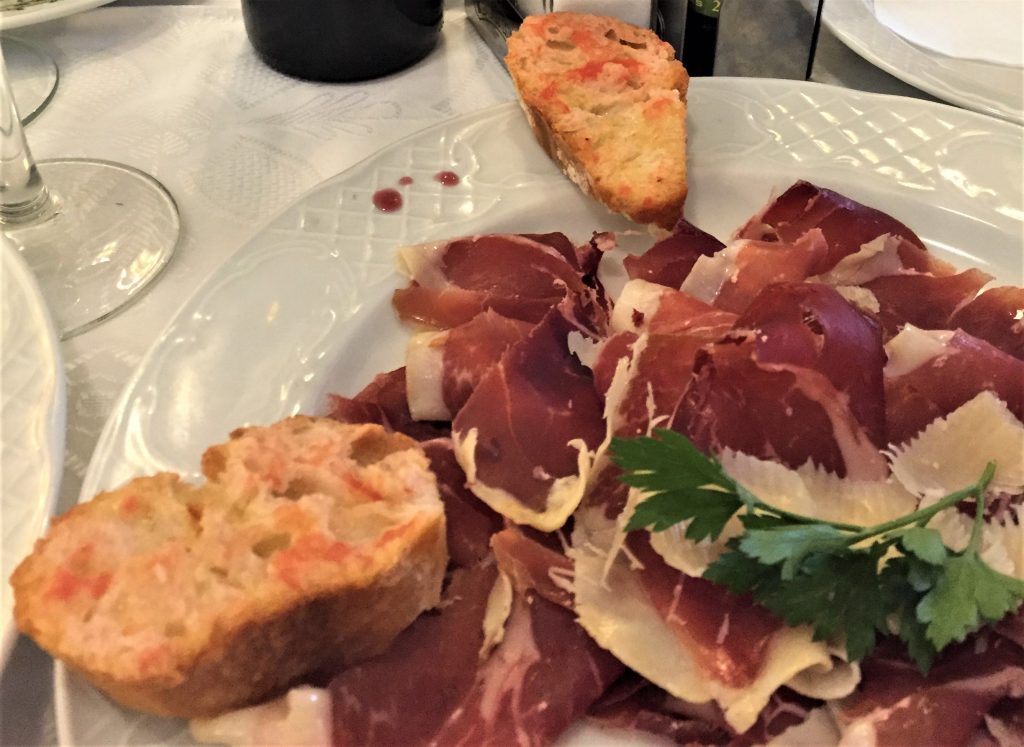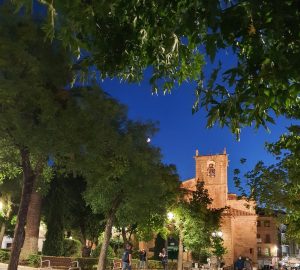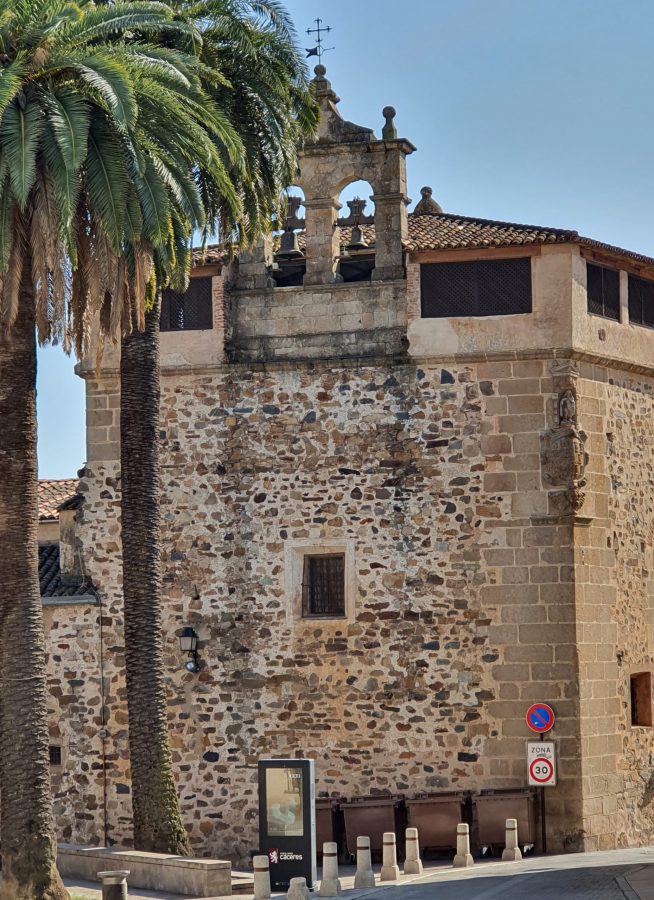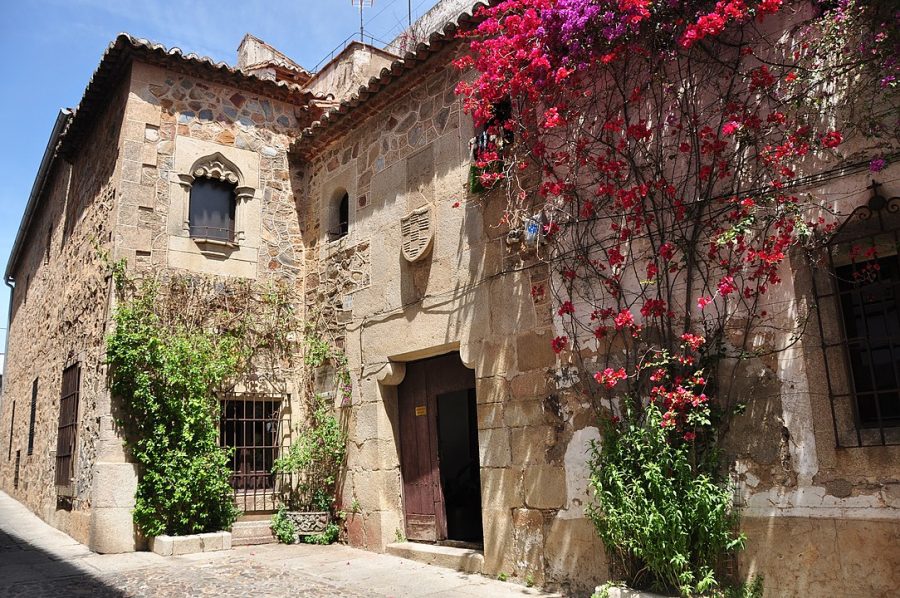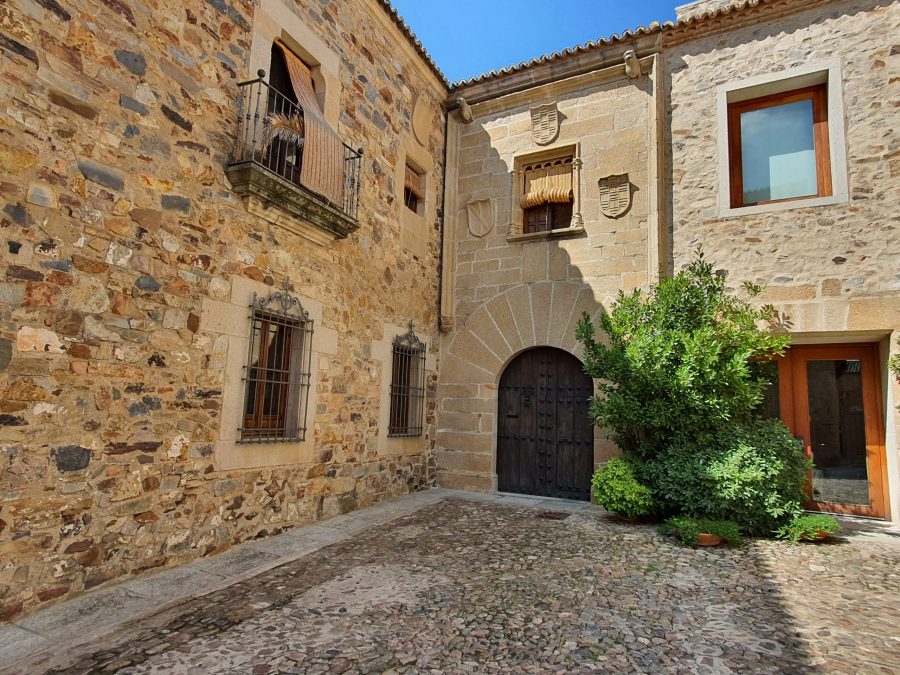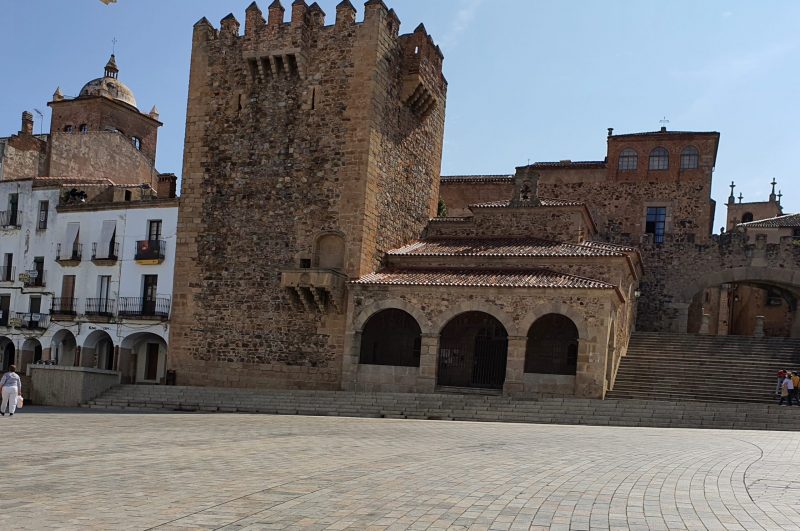InSpain.news headed to Extremadura to discover this little-known region of Spain. This series of articles explores the region’s main towns and cities, starting with the UNESCO World Heritage Site – Cáceres.
A warm September sun was shining upon the honey-coloured stone of Cáceres Old Town as I stepped into Plaza Mayor. In-between lockdowns in 2020, this was the chance to explore more of Spain, and Extremadura was top of the list.
This small region, nestled against the border with Portugal, is bursting with history, delectable gastronomy and delightful natural wonders. Cáceres was a history and gastronomy stop, with the Old Town a major attraction.
History of Cáceres Old Town
Cáceres has a long history. Human remains dating from prehistoric times were found in La Cueva de Maltravieso and El Conejar.
The Romans founded Norba Caesarina in 34BC. A city gate, Arco del Cristo (Puerta del Río) survives from that period and forms part of the city walls. The city walls are still standing and within is a medieval town setting that looks almost untouched. It is for this reason that many television shows and films – including Game of Thrones – have been shot there.
 World Heritage Site
World Heritage Site
Cáceres was declared a UNESCO World Heritage Site in 1986, due to its blend of architecture. From Roman to Moorish and Italian Renaissance, it is beautiful to behold, as you wind along narrow streets before happening upon small squares.
Look up and you’ll see the (in the majority) crenelated towers. Thirty of them date to the Islamic period, which lasted from the 8th to 13th century, and the most famous is the Torre del Bujaco. The Christians reconquered the town in 1229, and during this period there was an important Jewish quarter. However, the almost 140 Jewish families were expelled in 1492 by the Catholic Kings.
Explorers
During the Reconquista and the Discovery of the Americas, Cáceres flourished. Influential Spanish families and nobles built homes and small palaces. The region of Extremadura was home to several explorers who made their fortunes in the Americas. In the 19th century, Cáceres became the capital of the province; its period of growth halted by the onset of the Spanish Civil War.
Plaza Mayor
Plaza Mayor sits outside the Old Town walls and dates back to the 13th century. That was when the Jewish community were forced to live outside the city walls. They settled on a small hill, just outside the gate of the city wall. There it had become tradition to hold an annual fair. Here they built their new homes and businesses becoming the undisputable commercial epicentre of Cáceres.
The square always held a social function, where people gathered to attend markets, bullfights, public executions and military parades. Most recently it is the site of music festivals such as the WOMAD Festival which takes place in May.
Torre de la Yerba
The tourism office is on the east side and flanked by the Torre de la Yerba, a Moorish watchtower built in the 12th century. Built on the site of ancient Roman ruins, also in the 12th century, is the iconic, 25 metre high Torre de Bujaco. From the rooftop there are incredible views of the Old Town. Sadly, it was closed when I visited.
Entering the Old Town
From Plaza Mayor, the 18th century Arco de la Estrella (Star Arch) leads into the Old Town and the Plaza de Santa Maria. Here the co-cathedral of Santa Maria snuggles in among the Palacio de los Golfines de Abajo and Palacio de la Diputación Provincial.
Bearing right from the back of the plaza is Plaza de San Jorge and the Church of Saint Francisco Javier whose twin towers and bright white façade stand out from the crowd of sand coloured stone. Saint George is of particular relevance to the Christians as it was on April 23rd in 1229, they reconquered Cáceres from the Moors.
Every corner of the town was pretty and demanded yet another photo. The bougainvillea climbing the walls of the Hospital of the Knights was a pretty sight as I rested to gather my bearings.
 Arabic museum
Arabic museum
Having wandered almost every nook and cranny, I stumbled upon the Casa Museo Árabe Yusuf Al Burch. This is not a building to miss. A private museum, painstaking efforts restored the different rooms while paying attention to historical accuracy.
The architecture and original articles donated to the museum give you an idea of how the affluent Arab society lived in Cáceres. I loved wandering the many rooms and patios. There was a sense of tranquility and harmony as I ducked through the numerous doorways.
Don’t feel restrained by the Old Town, beautiful as it is. Also worth seeing are the Iglesia de Santiago, Plaza de Santa Clara and, on the hill overlooking the town, the Santuario Virgen de la Montaña.
A taste sensation
Extremadura’s gastronomy is sensational, particularly when it comes to meat, cheese and wine. Home to Jamón Iberico, delightful red wines, lamb and kid dishes, it’s a travel foodies’ top Spanish destination.
My hotel was in Plaza San Juan. This meant the walk for some of the region’s best jamón took no more than twenty steps. As the streetlights highlighted the plaza’s eponymous church, I sipped on a glass of Paiva Crianza – a soft, fruity red – and dug into a generous dish of black olives.
Meson San Juan
I was at Meson San Juan; a tapería recommended as serving the best jamón in the town. I was not disappointed. Not overly salted, not chewy and just the right amount of fat – the recommendation was spot on. Add to that a local dish of morcilla chopped with potatoes, an egg and topped with cheese; all served in a in a ceramic acorn (bellota).
An evening stroll certainly aided digestion. Cáceres at night was as beautiful as during the day.
The aged stones reflected the moonlight in the plazuelos which contrasted with shadowy narrow streets. Atmospheric certainly, and the reason why local film enthusiasts were creating their own piece of magic in a side street.
For more information on Cáceres, visit the Cáceres Tourism website.
Next in the Extremadura series is Mérida, a Roman treasure trove.
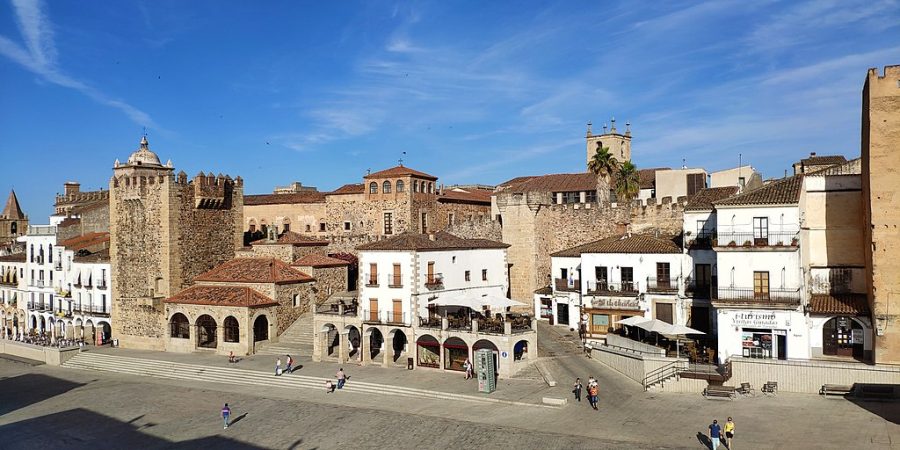
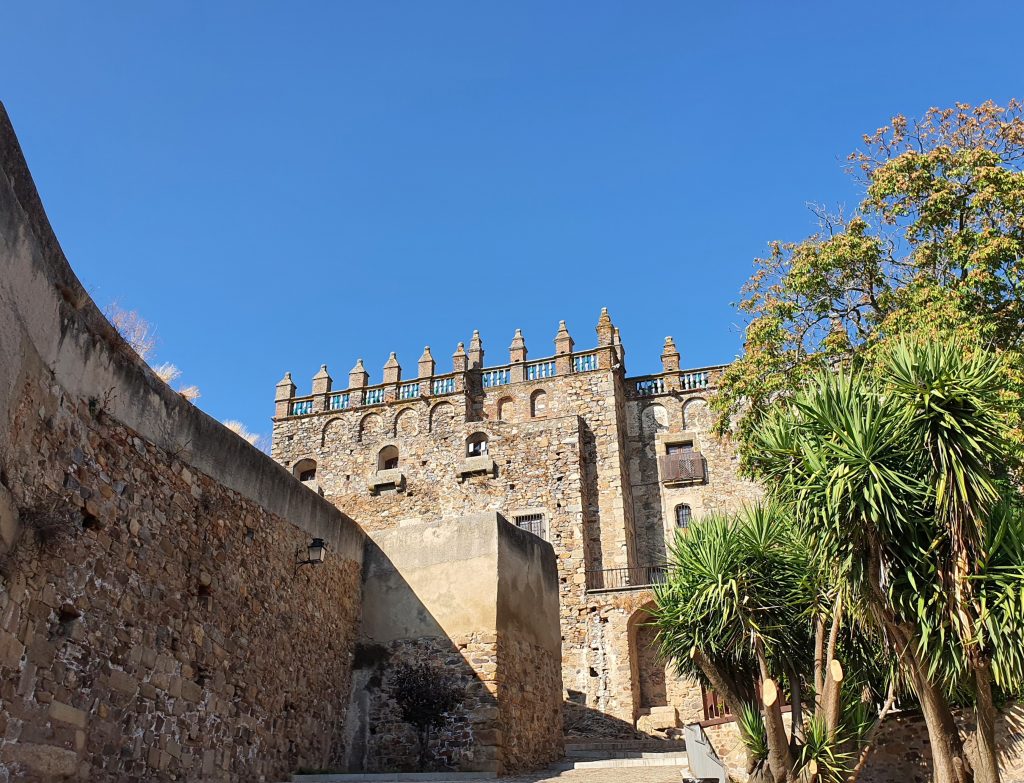
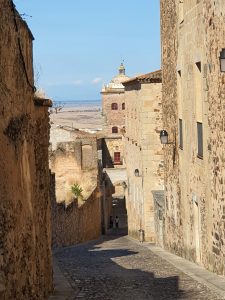 World Heritage Site
World Heritage Site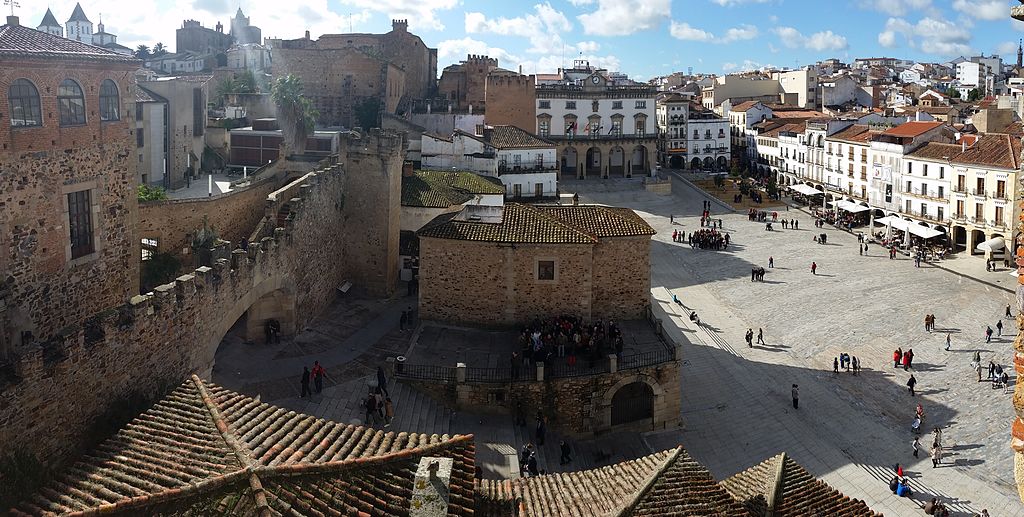

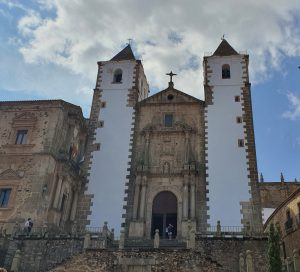
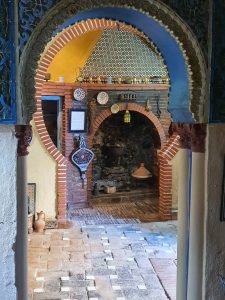 Arabic museum
Arabic museum